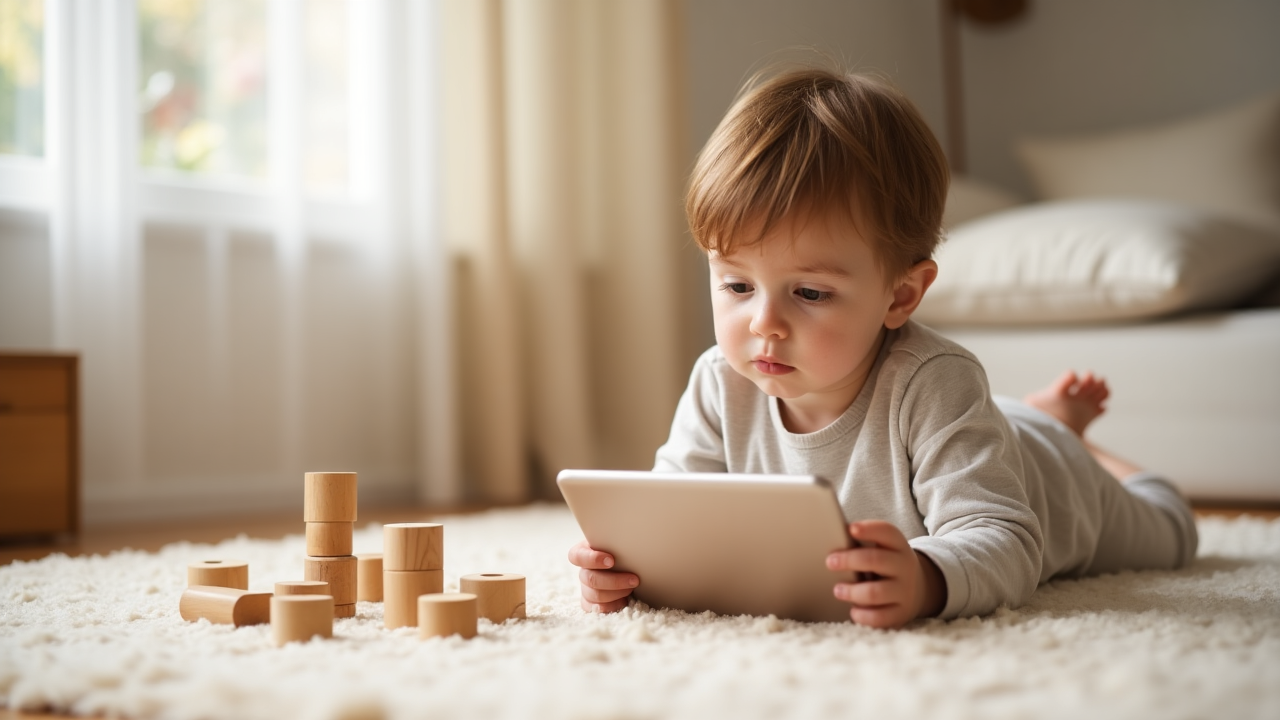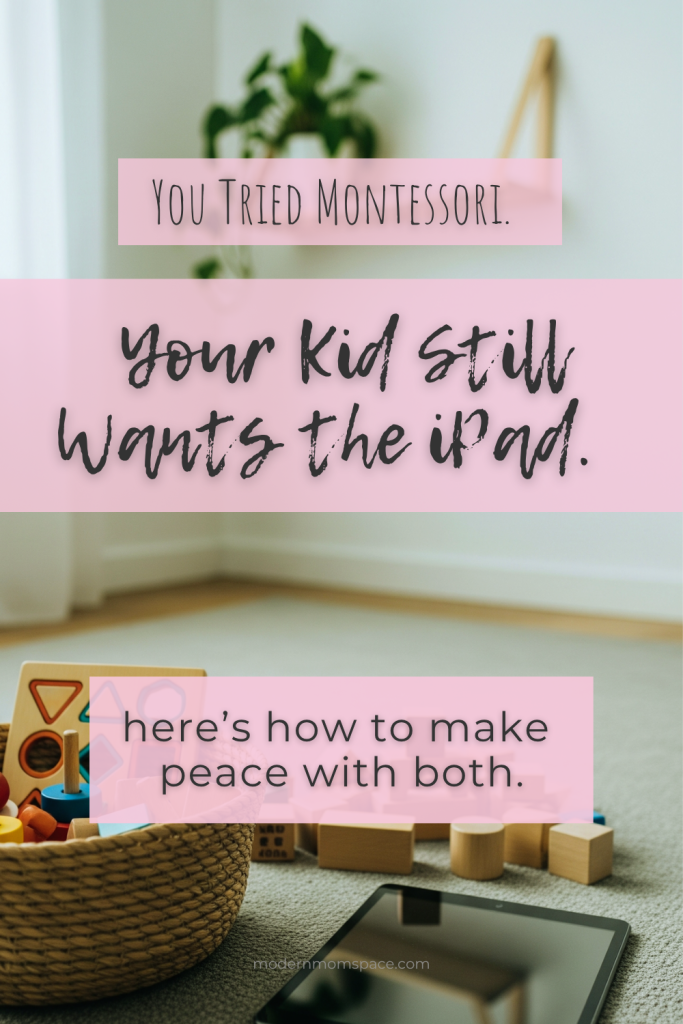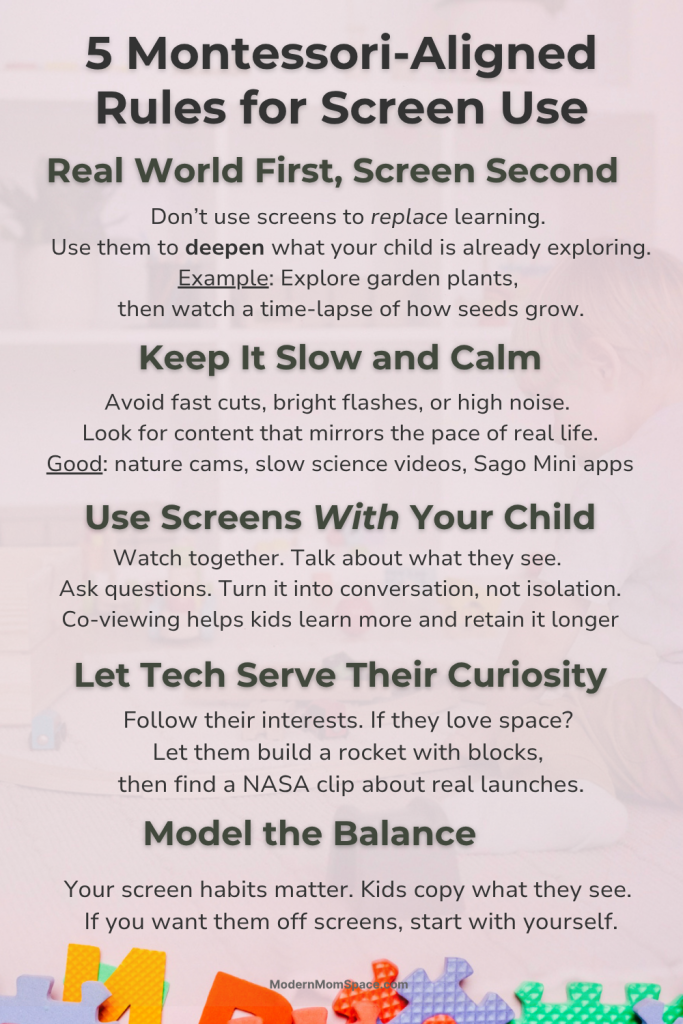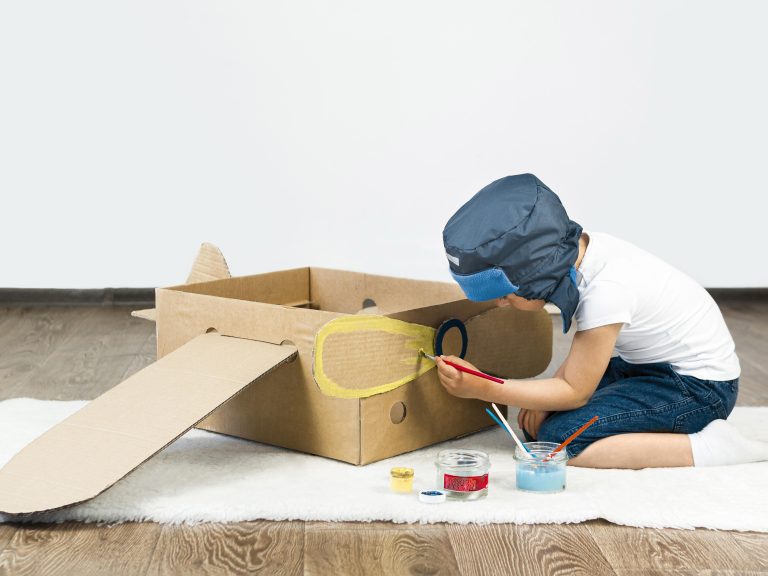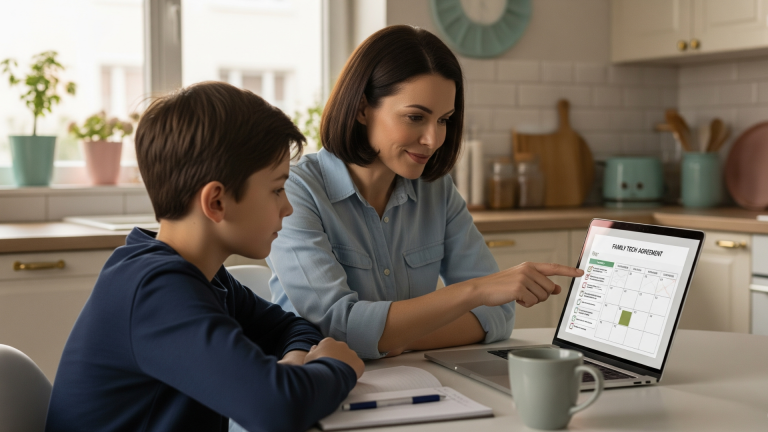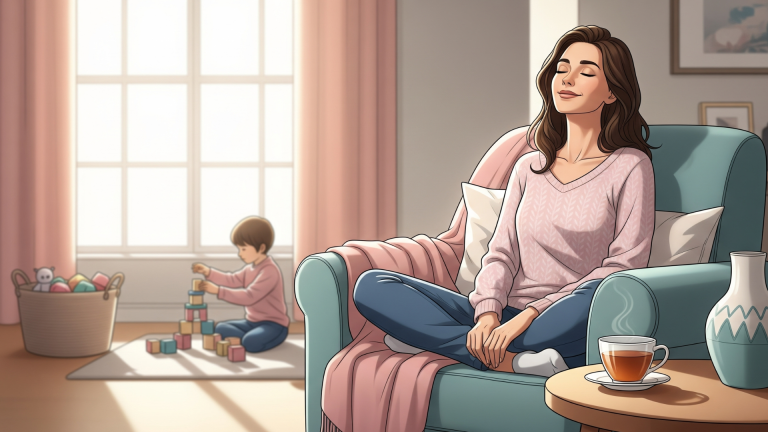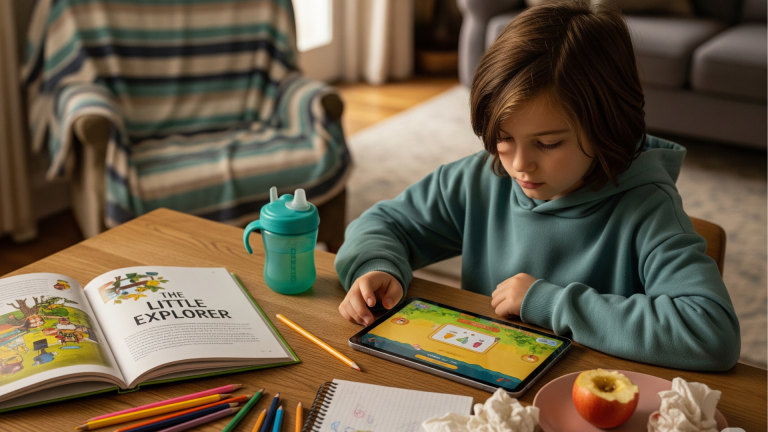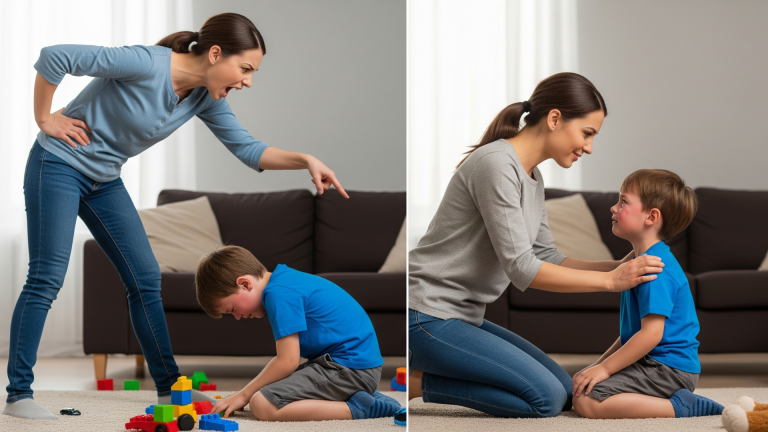Is It Possible for Montessori and Tech to Coexist in a Modern Home?
You set up the wooden toys.
You banned cartoons before breakfast.
But somehow… the iPad still wins.
If you’re trying to balance Montessori and technology in real life—where you need a break, and your kid knows how to unlock your phone—you’re not failing. You’re just parenting in the 2020s.
Montessori and tech feel like total opposites. One says, “slow down and follow the child.” The other throws Peppa Pig in your face at 60 frames per second. But here’s the truth:
Montessori and technologycan coexist — if you’re intentional about it.
And in this post, we’ll unpack exactly how. No guilt trips. No Pinterest-perfect routines. Just honest help.
Wait—Doesn’t Montessori Mean No Screens?
Nope. That idea’s common, but not quite right.
Maria Montessori lived before screens were a thing. What she emphasized was hands-on, real-world learning — especially in the early years. Movement, independence, and rich sensory experiences mattered more than anything you could “teach” by talking at a child.
She didn’t write about screens because they didn’t exist. But if she were around now? She’d probably ask how tech affects your child’s focus, creativity, and ability to learn through real-life interaction.
Need a quick refresher on Montessori itself? Start here: What Is Montessori? A Beginner’s Guide for Modern Moms
The Real Problem Isn’t Tech. It’s Passive Tech.
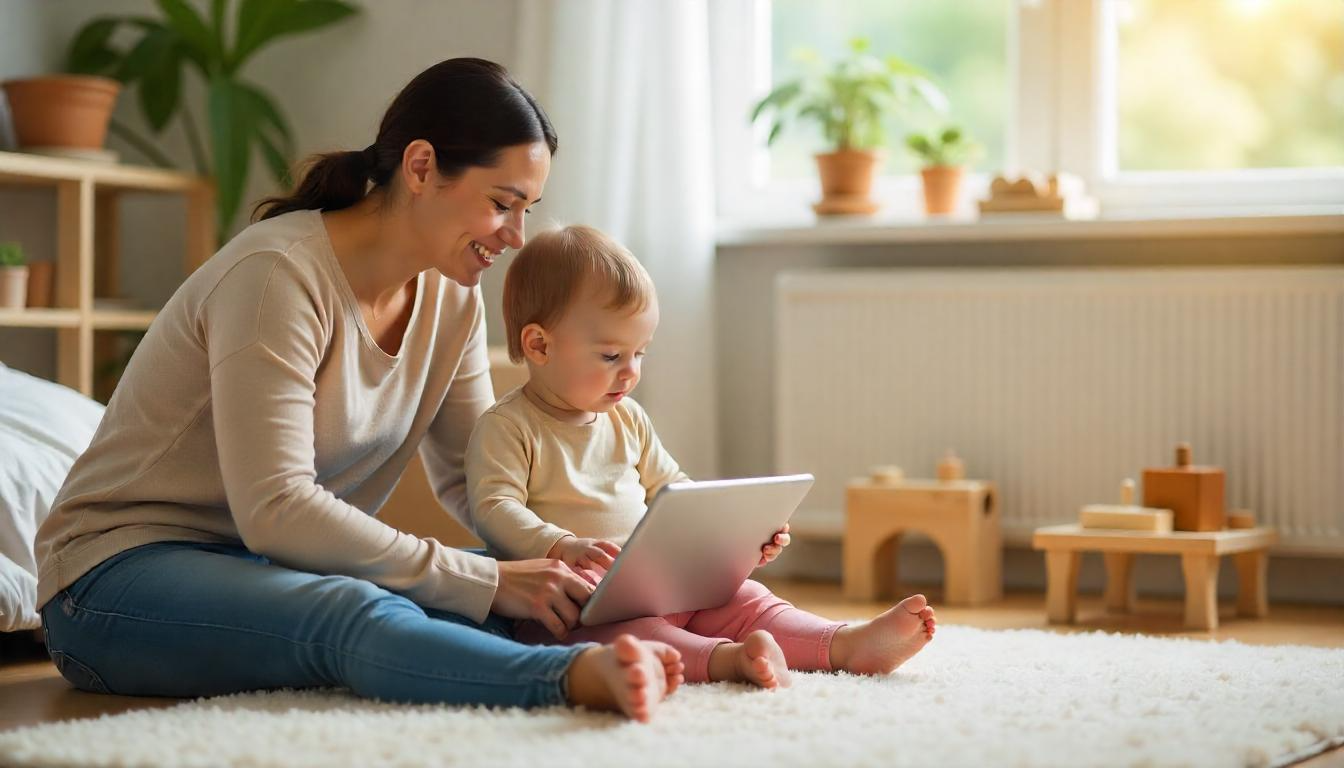
Montessori isn’t anti-technology. It’s anti-passivity. Anti-distraction. Anti-sensory overload.
So while dumping your toddler in front of YouTube for two hours is definitely not Montessori-aligned, using tech to support real-world learning? That’s different.
Let’s break down some myths first.
3 Common Assumptions (And What the Research Really Says)
1. “Montessori Must Be 100% Screen-Free”
The assumption: If you follow Montessori, screens are out.
The truth: Most Montessori classrooms avoid tech for young kids, but many reintroduce it around ages 9–12 for things like research, coding, or typing. In the home, it’s about being mindful.
Data check: Simone Davies (The Montessori Toddler) recommends minimal, calm, and purposeful screen use—not zero use.
2. “Screens Kill Focus and Imagination”
The assumption: All screen time fries your kid’s brain.
The truth: Fast-paced, overstimulating media can absolutely mess with attention spans. But calm, interactive, or co-viewed screen time? Totally different story.
Data check: A 2023 JAMA Pediatrics study found high screen use under age 2 linked to lower executive function at age 9.
Meanwhile, a 2020 Frontiers in Psychology meta-review showed that interactive, parent-supported screen use (like learning apps or video chats) can support development.
3. “Screens Are Cheating — Montessori Toys Are Always Better”
The assumption: If it has a screen, it’s worse than a $60 wooden toy.
The truth: Montessori prefers tangible materials because they build coordination, patience, and real-world skills. But tech can extend learning when done well.
Example: Watch a video on volcanoes after doing the baking soda + vinegar experiment. That’s real-world first, screen second.
The Real-Life Tech Struggles (That Montessori Didn’t Prepare You For)
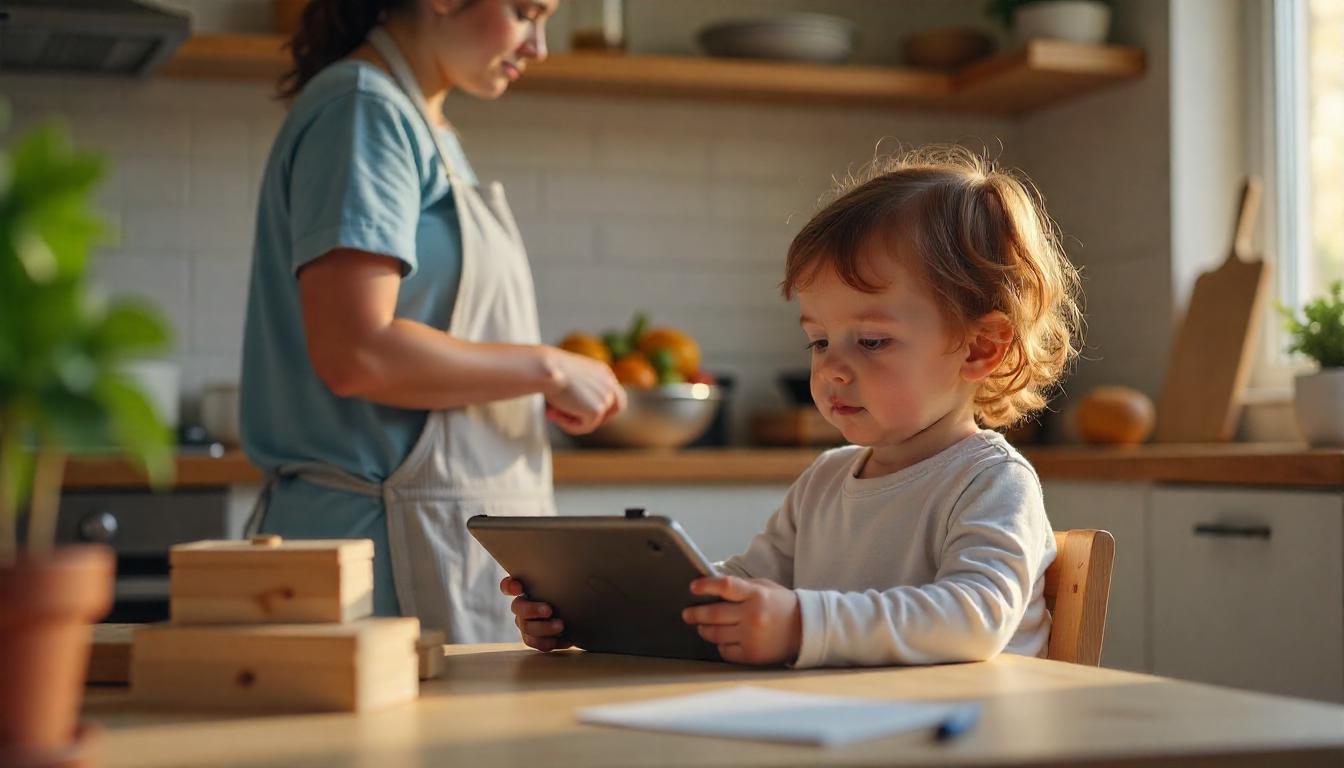
You need a break.
Sometimes, screens are the only thing that keep your toddler from throwing blueberries at the ceiling while you make lunch. That’s not failure. That’s survival.
Pew Research (2020): 62% of U.S. parents say managing screen time is hard when they’re working or multitasking.
Your kid is surrounded by screens anyway.
Even if you ban shows at home, your child sees tablets at Grandma’s house, school, restaurants, and in every other kid’s backpack.
Common Sense Media (2022): Kids aged 2–8 average 2.5 to 3 hours of screen time per day.
Montessori toys are expensive. Screens feel cheap.
You want the wooden shape sorter. But that $5 “educational app” looks pretty good at checkout.
Joan Ganz Cooney Center (2021): 75% of parents download educational apps—but only 22% vet them first.
So… Can Montessori and Tech Coexist?
Yes. But only if tech supports Montessori values:
Here’s how to make that happen.
5 Montessori-Aligned Rules for Screen Use
1. Real World First, Screen Second
Don’t use screens to replace learning. Use them to deepen what your child is already exploring.
Example: Explore garden plants, then watch a time-lapse of how seeds grow.
2. Keep It Slow and Calm
Avoid fast cuts, bright flashes, or high noise. Look for content that mirrors the pace of real life.
Good: nature cams, slow science videos, Sago Mini apps
3. Use ScreensWith Your Child
Watch together. Talk about what they see. Ask questions. Turn it into conversation, not isolation.
Co-viewing helps kids learn more and retain it longer.
4. Let Tech Serve Their Curiosity
Follow their interests. If they love space? Let them build a rocket with blocks, then find a NASA clip about real launches.
5. Model the Balance
Your screen habits matter. Kids copy what they see. If you want them off screens, start with yourself.
Want a deeper breakdown on how to parent confidently in a tech-filled world? Raising Kids in the Digital Age covers rhythms, boundaries, and real-life screen balance.
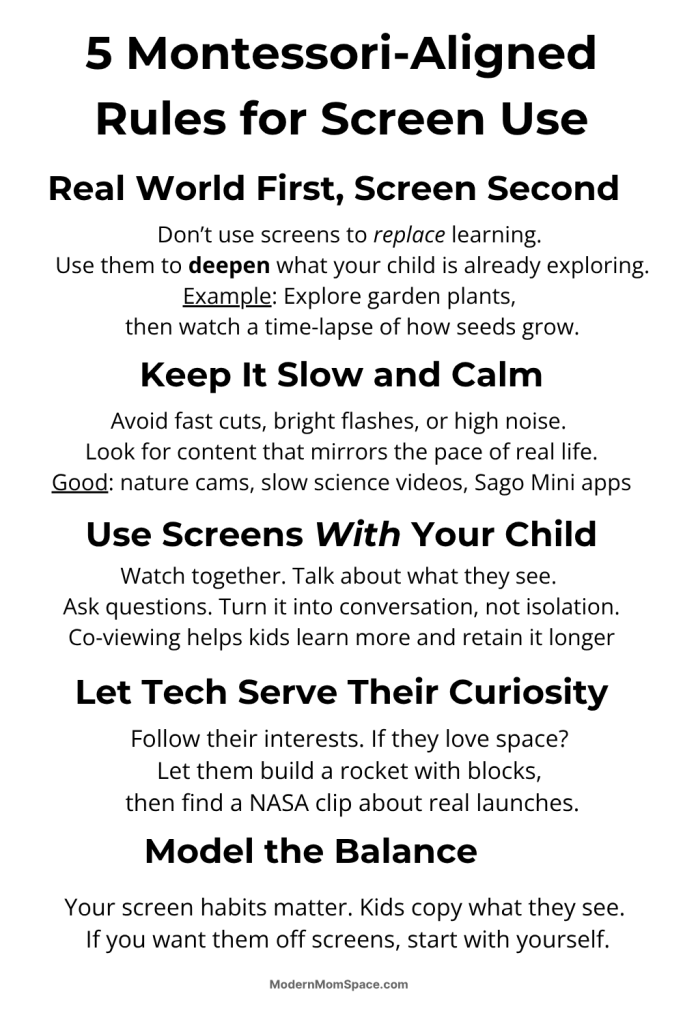
So What Counts as “Montessori-Aligned” Tech?
Use this quick filter:
The CIRC Framework
If it passes the CIRC test, it’s probably a Montessori-friendly use of tech.
What Balance Might Actually Look Like
For Toddlers (1–3):
For Preschoolers (3–5):
For School Age (6–9):
Note for Neurodivergent Families:
Kids with ADHD, autism, or sensory sensitivities may engage with tech differently. For some, it’s a self-regulation tool, not just a distraction. Follow Montessori’s core advice: observe your child. Adapt based on their needs—not a fixed rule.
You Don’t Need to Be a Screen-Free Saint
The goal isn’t perfection. It’s presence.
Tech isn’t evil. But it needs boundaries. And when you lead with real-world, open-ended play? Screens become a supplement — not a substitute.
So yes, Montessori and tech can live under the same roof. Especially when you’re the one setting the tone.
Want help decoding what screen time actually is and how to set better boundaries? Read this next: What Is Screen Time, Really?
Give this a try this week:
Next time your kid wants screen time, ask:
“Is there a hands-on version of this first?”
Then use the screen as a follow-up or bonus.
Save it. Share it. Send it.
Found this helpful? Save this article. Share it with your mom group.
Or send it to a mom who’s juggling wooden toys and YouTube requests.

